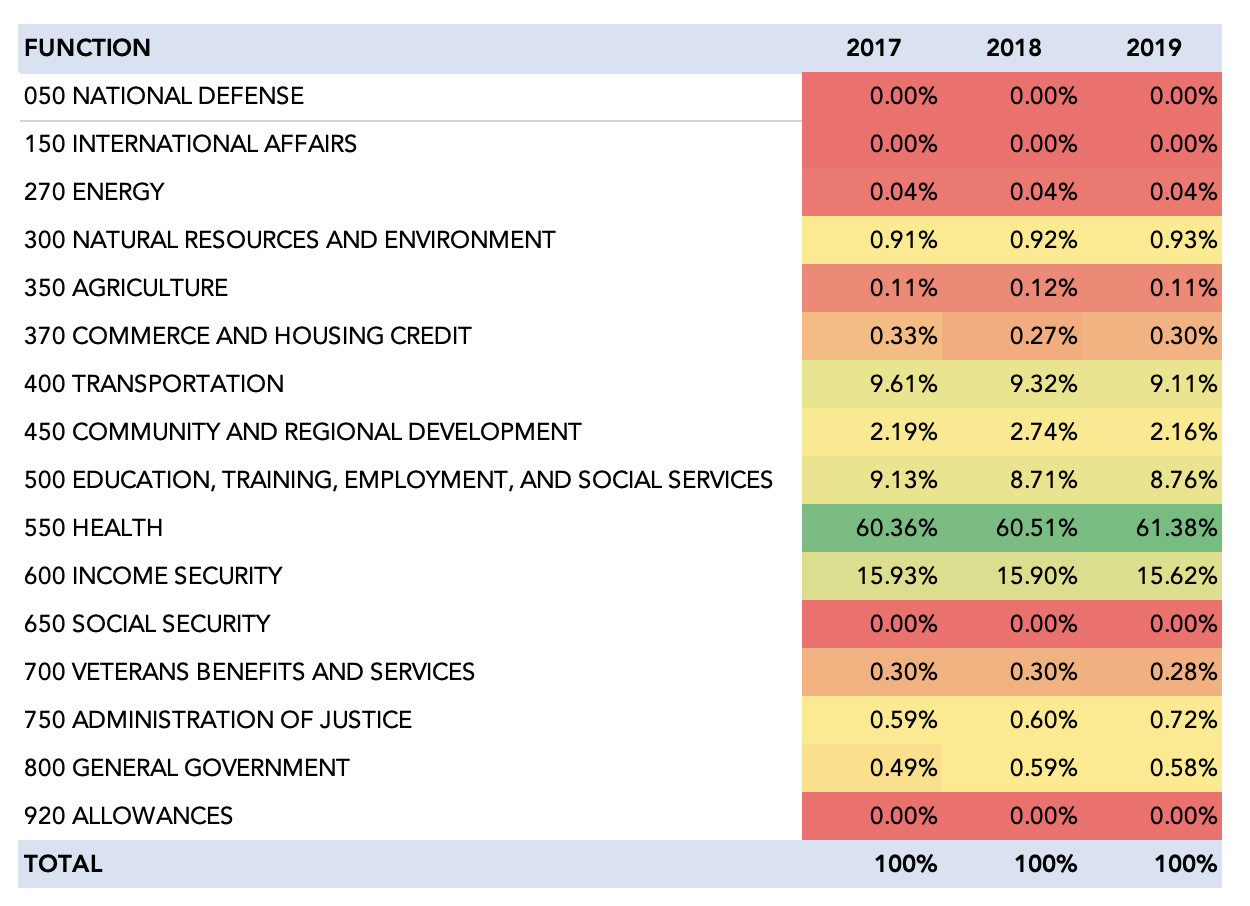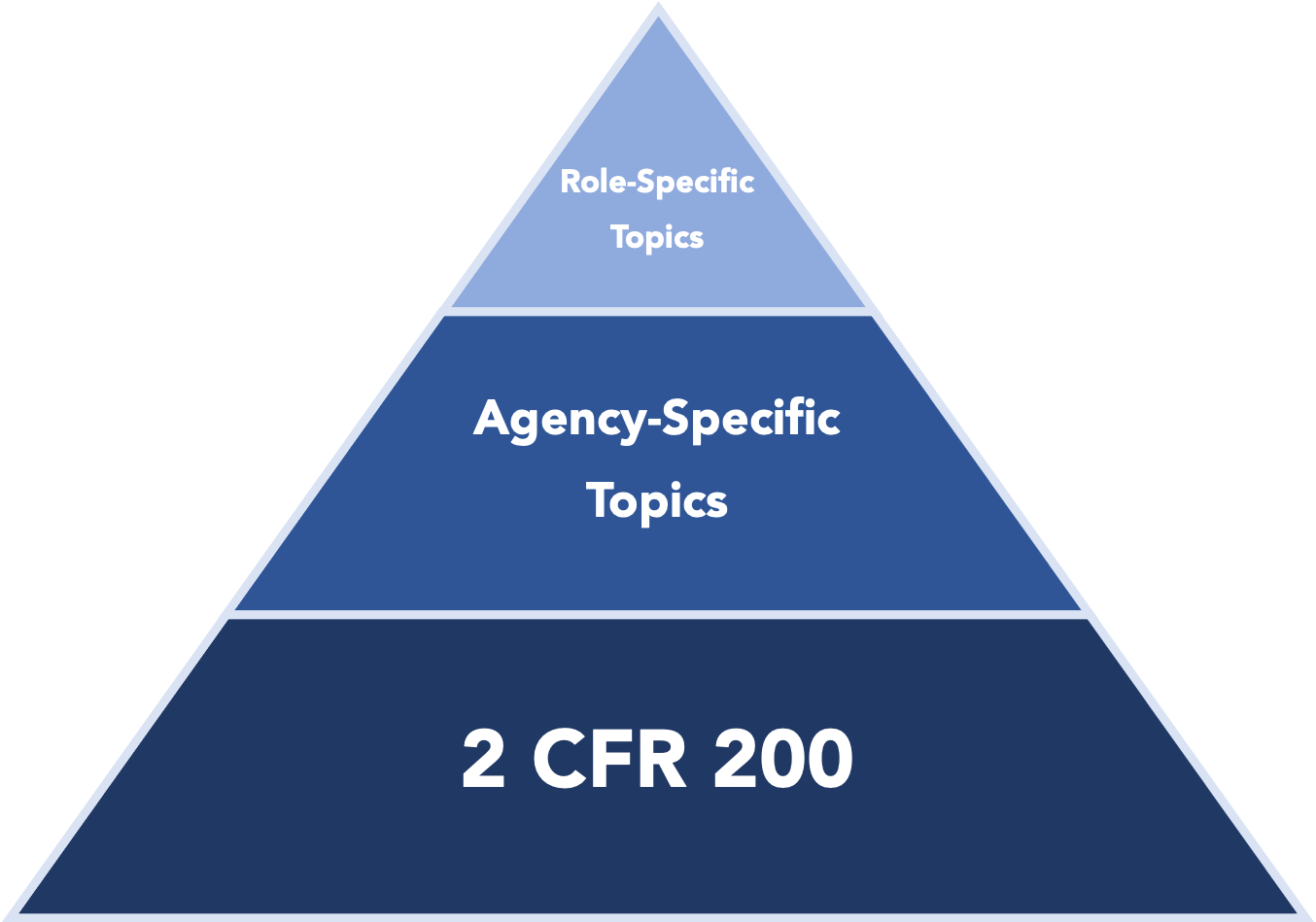Insights: It’s Time for a Federal Assistance Certification
The U.S. Federal government distributes approximately 16.2% of its total annual expenditures via grants and cooperative agreements — but a government-wide grants management certification doesn’t exist. Timing is right to fix this.
APRIL 2021 | 10-MINUTE READ | DENIS COOK, PGMP
Topics: Grants, Cooperative Agreements, Financial Assistance, Certification, Training, GAO, OMB, Workforce Development
Introduction
How much money does the U.S. Federal government distribute via grants and agreements?
Exhibit 1: Federal Grants to State and Local Governments as % of Total Outlays (FY 2019)
According to the Office of Management and Budget (OMB), the U.S. Federal government distributed approximately $721 billion to State and local governments in FY2019 — about 16.2% of total Federal outlays. About one in six Federal dollars, then, are spent with a financial assistance instrument — a grant or cooperative agreement.
This 16.2% has been relatively stable over the past 20 years, ranging from 15.4% (FY2012) to 18.0% (FY2003) in constant dollars. Looking forward six years, OMB projects a similar trend.
Where does the $700B+ fund?
Over 25 small and large Federal agencies, civilian and defense, execute their missions, in part, through grants and agreements. Grants.gov, a go-to resource for grants recipients, provides an exhaustive list of award-making agencies.
The U.S. Department of Health and Human Services (HHS) issues the most grants in terms of dollars: In FY2019, the lion’s share of Federal grants and agreement funds, about 61%, were categorized under the “Health” function. The overwhelming majority of these expenditures, about 93%, funded “Grants to States for Medicaid.”
Exhibit 2: Federal Grants Expenditures by Function (FY2017 - FY2019)
Who distributes and monitors the funds?
Theoretically, the majority of grants professionals — those who award and administer financial assistance programs — would fall under the Grants Management job series (1109), which the Office of Personnel Management (OPM) established in 2010. The 1109 series “includes positions which manage, supervise, lead, or perform administrative business, policy, and analytical work involving:
the management, award, and/or obligation of funds for grants, cooperative agreements, and other related instruments and services such as discretionary and mandatory grants, using financial, administrative, business and negotiation procedures;
the competitive or non-competitive evaluation of grants proposals; and/or
the administration or termination, and/or closeout of grants and/or grants assistance and agreement awards.”
In reality, grants professionals are all over the job series map. (A perhaps telling vignette: OPM has not published individual occupational requirements for this job series.)
In a 2018 report on the grants management workforce, GAO found that, of three grant-making agencies surveyed — Health and Human Services, Agriculture and Education — the 1109 job series was markedly underutilized, relative to the true number of grants professionals. In fact, 1109s constituted only 11.8% of the grants professionals within these agencies.
Exhibit 4: Number of Grants Specialists and Non-Grants Specialists in the Grants Workforce at Selected Agencies as of March 2018
How many grants professionals are in the Federal workforce?
According to December 2020 Fedscope data, of the 2,171,513 employees in the Federal government, 2,547 identified as “1109s,” or grants management professionals. By comparison, the Federal government employed 40,006 contracting professionals (“1102s”) in December 2020.
But this 2,547 total of 1109s is, as we previously noted, artificially low. To arrive at a more realistic estimate, we can examine Fedscope data from March 2018 — the same period as the aforementioned GAO report — and see a total of 2,093 1109s. If we take a fairly conservative estimate of true under-reporting at 50% (instead of 88%), the December 2020 figure inflates to 5,094.
So, we can reasonably assume there are between 4,500 and 5,500 grants professionals in the Federal workforce.
How much money does each grants professional award and/or administer?
If we assume the Fedscope-provided number of 1102s is accurate – in our view, a safe assumption – then the Federal government employs one 1102 for every eight 1109s.
This 1:8 ratio is important. Returning to our earlier observation that the Federal government distributed 16.2% of FY2019 outlays as grants, the implication is that, on average, grants management professionals oversee approximately 150% more dollars than their contracting peers.
Exhibit 5: Comparison of Estimated Federal Outlays “Under Management’ by Grants Professionals and Contracting Professionals
While it’s true that “block” grants could inflate the average number of dollars that the median grants officer manages, the fact remains the dollars are real and deserving of professional and prudent management.
Does a training and/or certification need exist for these ~5,000 grants professionals?
In our view, yes. Colleague Consulting designs, develops, delivers and maintains a range of certification-based training courses and curricula, and we agree with the overarching conclusion of a 2018 GAO report about the Federal grants workforce:
“Given the importance of grants as a tool to achieve Federal objectives and the large outlays the Federal government makes to fund them each year, it is critical that the people who manage these grants — the Federal grants workforce — be well-trained to handle their responsibilities.”
A concise demonstration of this training need is a comparison of acquisition workforce training and assistance workforce training — the former, we believe, constituting a model.
Exhibit 6: Comparison of Federal Acquisition Training and Grants Workforce Training
Why now?
This is not a new opportunity…
The GAO report we mentioned earlier, GAO-18-491, Grants Workforce: Actions Needed to Ensure Staff Have Skills to Administer and Oversee Federal Staff, was published in September 2018 — hardly “new news.”
What’s more, the 2018 report paralleled a similar GAO report, GAO-13-591, from 2013. Grant Workforce: Agency Training Practices Should Inform Future Government-wide Efforts examined “selected good practices agencies use and challenges they face, if any, in training the grants workforce, and the potential implications of these practices and challenges for government-wide…training and certification.”
The 2013 GAO report’s recommendations, unfortunately, didn’t make it far. Two years later, in 2015, the report’s status update said, “According to the Council on Financial Assistance Reform (COFAR) strategic plan, the target date for establishing government-wide grant management training certification standards was to be September 2015. However, COFAR did not meet that target and subsequently the Council made the decision that it will no longer pursue the goal of establishing government-wide grant training certification standards.”
…but complementary regulatory drivers present a unique window
Fiscal year 2022 presents a unique opportunity to hatch a pilot government-wide training and certification program. The timing could be right for two strategic drivers to complement one another:
Implementation of the Program Management Improvement Accountability Act (PMIAA)
Commencement of the HHS Grants Management Quality Services Management Office (QSMO)
How do you design a government-wide financial assistance curriculum that works for everyone?
Start with 2 CFR 200
For all intents and purposes, all Federal agencies, both civil and defense, follow 2 CFR 200 when awarding and administering financial assistance instruments. Accordingly, 2 CFR 200 should serve as the foundation for a government-wide grants and agreements training and certification program.
A strong introductory course should cover the complete grants lifecycle and address key topics like cost principles, conflicts of interest and cost sharing (among others). To ensure the introductory course meets the needs of a global workforce — Federal grants officers serve all over the world — we recommend creating a fully asynchronous, self-guided online course that covers fundamental concepts in approximately 20 contact hours.
Exhibit 3: High-Level Grants Curriculum Architecture
A foundational knowledge base, rooted in 2 CFR 200, that is shared across the Federal government has the added benefit of promoting mobility among Federal agencies. A grants specialist in USDA will possess the same foundational knowledge as grants specialists in DOI.
Layer on agency-specific topics
Recognizing that many agencies publish and follow their own assistance “regulations” (which, for our purposes, could be statutes, orders, etc.), we recommend following an introductory 2 CFR 200 class with agency-specific content. DoD grants officers, for example, can learn about DoDGARs, while HHS grants officers can learn about 45 CFR 75.
Agencies — or sub-agencies, OPDIVs, components, etc. — should be afforded a fair amount of latitude when designing, implementing and managing this second learning tier. These organizations know themselves best, and allowing them to establish their own best practices will drive buy-in and create a more learner-centric curriculum.
Conclude with role-specific topics
We recommend rounding out the training and certification program with special topics — Advanced Cost Principles, for instance — that are pertinent to specific roles and experience levels. These could be eight- to 24-hour “electives” that grants professionals consume, through time, as their responsibilities and purview expand. This final learning tier could be comprised of government-wide and agency-specific topics and learning artifacts — in effect, a learning space shared across the Federal grants workforce.
Who should “own” this training and certification program?
Although the HHS Grants Management Quality Services Management Office (QSMO) has its work cut out for it, we believe it’s the right organization for the job. After all, the Grants Management QSMO is charged with “transform[ing] government-wide grants management end-to-end.”
What will make the training and certification program successful?
Success implementation and, equally important, adoption of an effective grants management training and certification programs rests on three key considerations:
Focus on career growth. A robust training and certification program should grow with the grants professional — that is, it should present a variety of continuous learning opportunities that reward the diligence and curiosity of the Federal assistance workforce.
Acknowledge and leverage that agency-specific “idiosyncrasies” are real. The majority of grant-making agencies and sub-agencies operate differently. They have different policies, regulations, procedures and cultures — and those differences matter. Any government-wide program that seeks adoption must leverage those differences.
Provide modern training opportunities for a modern workforce. The sun is setting on the era of packing a classroom for four straight days in downtown DC with folks from all over the country. In its place is a new approach to training — one that is platform-agnostic, learner-centric and iterative. It’s an approach to training that welcomes change.






